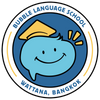Image:
We often think of literacy as just reading and writing. But in 2025, what it means to be “literate” has broadened—and fast. As digital technologies become part of daily life, global educators, organizations, and governments are asking: How do we ensure everyone is literate not just in print, but in code, data, media, and online safety?
Recent updates—from UNESCO to local education ministries—say that literacy must now include digital, functional, and media literacy, especially in underserved or remote communities.
🔍 Major Developments & Insights
-
UNESCO’s International Literacy Day 2025 theme is “Promoting Literacy in the Digital Era.” It highlights that nearly 739 million adults globally still lack basic literacy skills, and many of them are also digitally excluded. Digital literacy means being able to access, evaluate, create, and safely share digital content. It's not optional. For many, it’s as fundamental as knowing how to read a book or write a sentence.
-
In Maharashtra, India, a recent MoU with Cambridge University Press & Assessment aims to raise standards via teacher training, English proficiency, digital literacy, climate education, etc., showing that regions are updating curricula to cover these new literacy demands.
-
Alabama (USA) has started teaching data literacy to students in grades 6–12—helping them learn how to interpret data and think with evidence, not just absorb facts. This prepares young people better for careers and civic life.
💡 Why This Change Matters
| Reason | What It Means |
|---|---|
| Equity & Access | Without digital tools or skills, many are locked out of education, jobs, and civic engagement. |
| Workforce Readiness | Employers increasingly expect digital skills: using tools, navigating online information, working remotely. |
| Critical Thinking | Being able to evaluate what’s true online, spot misinformation, understand data—is central to being literate now. |
| Life Skills | From financial transactions to understanding health information online, digital literacy improves everyday life. |
🔧 How Learners & Educators Can Adapt
-
Schools and teachers can start integrating digital literacy into regular subjects, so that students practice with real digital tools.
-
Encourage safe media consumption and critical media thinking. Teach students to question sources and understand bias.
-
Include data literacy early: even basic graphs, interpreting data, and understanding statistics.
-
Provide access to technology (devices, internet), especially in rural or underserved areas.
-
For learners: build your own digital skills—explore basic coding, try tools that teach data or media literacy, follow trustworthy sources.
🌟 Final Thought
“Reading, writing, and arithmetic” used to be the pillars of literacy. In 2025, they’re still essential—but digital fluency joins them. To participate fully in today’s world, you need both the old-school literacy and the new: navigating, analyzing, creating, and engaging with digital information with care and confidence.
Reference:
https://unesdoc.unesco.org/ark%3A/48223/pf0000395395
https://globaltrendsreport.org/digital-literacy-critical-tech-thinking
https://timesofindia.indiatimes.com/city/nagpur/maharashtra-signs-mou-with-cambridge-for-global-standard-education-cm-fadnavis/articleshow/123980116.cms

